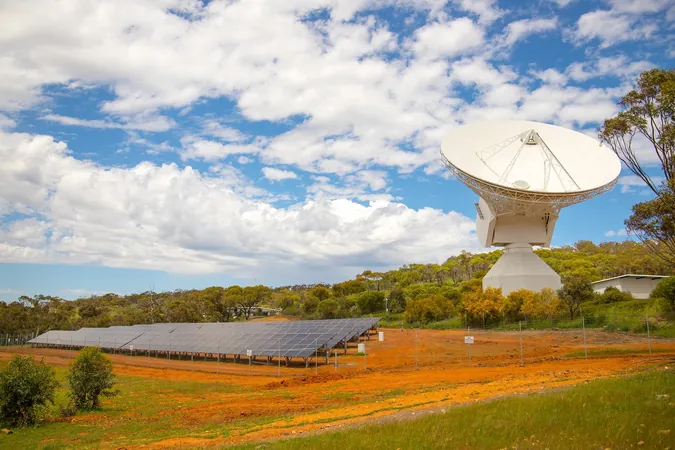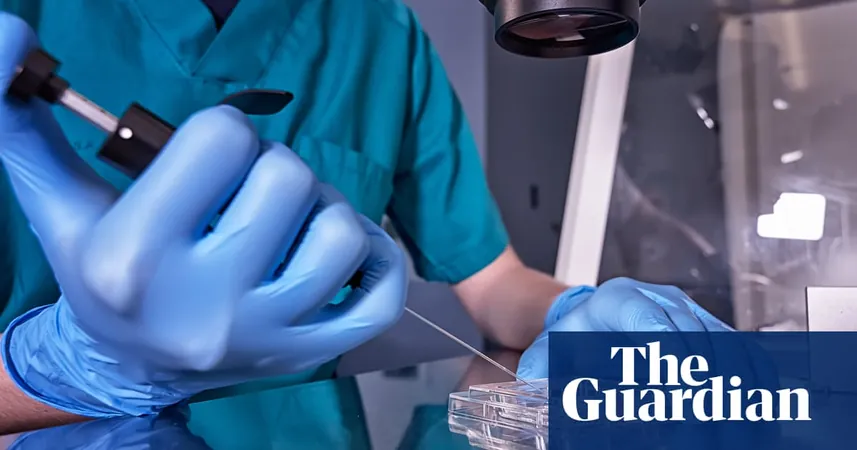
Revolutionizing Space Data Transmission: The Nancy Grace Roman Space Telescope's Groundbreaking Downlinking Strategy
2025-01-22
Author: Li
In a monumental leap for space exploration, ground station operators at the European Space Agency (ESA) are gearing up for an unprecedented challenge: efficiently transmitting data from NASA's upcoming Nancy Grace Roman Space Telescope back to Earth. Scheduled to launch in the latter half of 2026, this ambitious project promises to send a staggering 500 Mb/s of data, which is six times the highest rate achieved by ESA's current Euclid mission.
A Pioneering Step in Data Management
In October 2024, NASA and ESA successfully completed a series of critical system trials aimed at testing the transmission of high-speed data to ESA ground stations, followed by its transfer to Amazon Web Services (AWS), the cloud service provider chosen by NASA. This cloud-based approach marks a significant departure from traditional methods used by earlier space telescopes like Euclid and the James Webb Space Telescope.
While existing missions typically require extensive reconstruction and central transfer of data after downlinking, the Roman Space Telescope simplifies this process. Each ground station will demodulate the signal, decode the data, and upload the telemetry directly to the nearest AWS server—a method that significantly streamlines data handling.
Holger Dreihahn, Head of the Backend Software Section at ESA's Space Operations Centre (ESOC), emphasized the success of the trials: “We managed to handle our share of data and transfer them to AWS servers. On the other end, NASA successfully reconstructed the files within the Cloud.”
However, he acknowledged that the current connectivity does not yet match the planned 500 Mb/s data rate, stating, “We are actively working to enhance our speed from 200 Mb/s to 500 Mb/s and beyond.”
Laying the Groundwork for the Future
The shift towards a cloud-based data distribution model is a strategic move for ESA, aiming to develop a more robust operational environment for future missions. This initiative is inspired by similar successes at NASA, which has already implemented cloud solutions for sharing Earth observation data.
"This activity is a first step towards establishing a more cloud-centric setup for ESA operations," Dreihahn noted. "Our work on the Nancy Grace Roman Space Telescope will pave the way for a standardized approach applicable to upcoming missions."
Expanding Infrastructure for Success
To support these ambitious data transmission goals, ESA is bolstering its network of deep-space ground stations with the addition of a new 35-meter antenna in New Norcia, Australia. This cutting-edge facility, expected to be completed in late 2025, will play a critical role in downlinking scientific data from both the Nancy Grace Roman Space Telescope and other ESA missions.
Moreover, ESA is contributing essential components to the telescope's mission, including detectors for the coronagraph instrument, star trackers, and batteries—further solidifying the collaborative spirit of this groundbreaking project.
Conclusion
As we stand on the brink of a new era in space data transmission, the Nancy Grace Roman Space Telescope is not just expected to revolutionize how we handle astronomical observations, but it also sets an exciting precedent for future partnerships and technological advancements in space exploration. Stay tuned as this groundbreaking mission unfolds, providing us with unparalleled insights into the universe!




 Brasil (PT)
Brasil (PT)
 Canada (EN)
Canada (EN)
 Chile (ES)
Chile (ES)
 Česko (CS)
Česko (CS)
 대한민국 (KO)
대한민국 (KO)
 España (ES)
España (ES)
 France (FR)
France (FR)
 Hong Kong (EN)
Hong Kong (EN)
 Italia (IT)
Italia (IT)
 日本 (JA)
日本 (JA)
 Magyarország (HU)
Magyarország (HU)
 Norge (NO)
Norge (NO)
 Polska (PL)
Polska (PL)
 Schweiz (DE)
Schweiz (DE)
 Singapore (EN)
Singapore (EN)
 Sverige (SV)
Sverige (SV)
 Suomi (FI)
Suomi (FI)
 Türkiye (TR)
Türkiye (TR)
 الإمارات العربية المتحدة (AR)
الإمارات العربية المتحدة (AR)